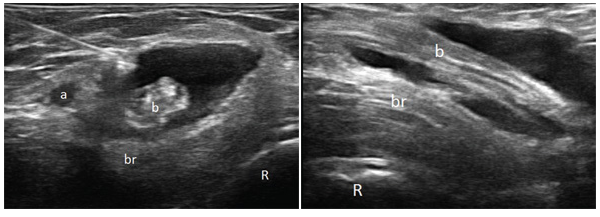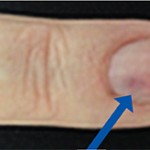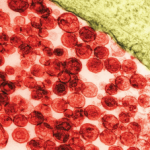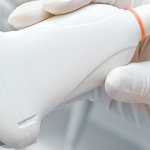Editor’s note: In this recurring feature, we first present a series of images (this page) for your review, and then a brief discussion of the findings and diagnosis. Before you turn to the discussion, examine these images carefully and draw your own conclusions.
History
These images were taken of an 85-year-old female with a one-year history of right antecubital fossa swelling and pain. She avidly crocheted.

Figure 1 (left): Transverse 18 MHz ultrasound image over the right antecubital fossa at a level distal to the joint line. The left side of the image is medial, and the right side is lateral (R: radius, br: brachialis muscle, a: brachial artery, b: biceps tendon). & Figure 2 (above): Longitudinal 18 MHz ultrasound image over the right antecubital fossa at a level distal to the joint line. The left side of the image is proximal; the right side is distal (R: radius, br: brachialis muscle, b: biceps tendon).



